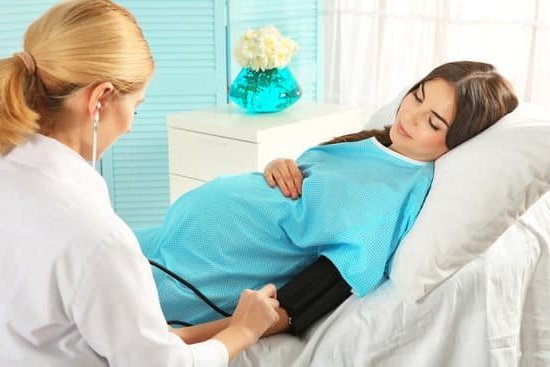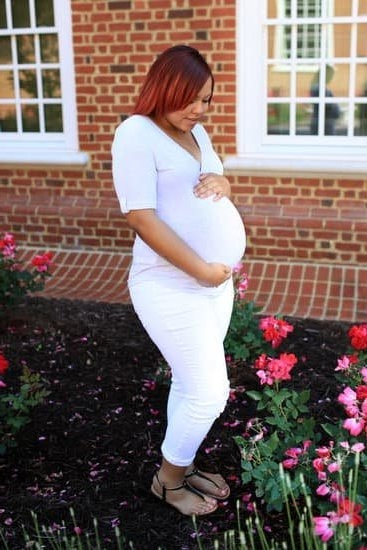Cat pregnancy is a fascinating and crucial aspect of feline reproduction, raising questions such as “How long does cat pregnancy last?” Understanding the duration of a cat’s gestation period is essential for pet owners to provide proper care and support during this crucial time. Just like in humans, the length of a cat’s pregnancy plays a significant role in ensuring the health and well-being of both the mother cat and her litter.
The average length of cat pregnancy, also known as the gestation period, typically lasts between 63 to 68 days. However, several factors can influence this timeframe, such as breed, age of the mother cat, and the number of kittens she is carrying. It is important for pet owners to be aware of these variations in order to anticipate and prepare for the arrival of new kittens.
During this period, it is beneficial for pet owners to familiarize themselves with the signs of pregnancy in cats. From physical changes like weight gain and nipple enlargement to behavioral changes such as increased affection or aggression, recognizing these signs can help ensure proper care for the pregnant feline. Stay tuned as we delve deeper into understanding cat pregnancy more comprehensively in the following sections.
Gestation Period of Cats
When it comes to cat pregnancy, one of the most commonly asked questions is, “how long does cat pregnancy last?” Understanding the gestation period of cats is essential for pet owners to properly care for their pregnant feline companion. The average length of cat pregnancy is typically around 63-65 days, or approximately nine weeks. However, it’s important to note that this can vary depending on various factors.
Factors Affecting the Length of Cat Pregnancy
Several factors can influence how long a cat’s pregnancy will last. One of the key determinants is the breed of the cat, as certain breeds may have slightly shorter or longer gestation periods. Additionally, the age and overall health of the mother cat can also play a role in the duration of her pregnancy. Environmental factors and stress levels can further impact the length of cat pregnancy.
What to Expect During Cat Pregnancy
During a cat’s pregnancy, pet owners may notice physical changes in their feline friend. These can include weight gain, a larger abdomen, and changes in nipple size and color. In terms of behavior, pregnant cats may exhibit signs such as increased affection or mood swings.
It’s crucial for pet owners to be observant and provide appropriate care and support throughout their cat’s pregnancy journey. Regular monitoring and veterinary check-ups are essential during this time to ensure the health and well-being of both the mother cat and her future litter.
Signs of Pregnancy in Cats
During a cat’s pregnancy, it can be essential to recognize the signs that indicate the presence of kittens growing inside the mother cat. Understanding these signs can help owners provide proper care and support throughout this crucial period. Here are some key indicators that your cat may be pregnant:
- Physical changes: One of the first physical changes you may notice in a pregnant cat is weight gain. As the pregnancy progresses, her abdomen will become enlarged, and you may even be able to feel the kittens moving inside her belly. Her nipples may also enlarge and develop a pinkish color as they prepare for nursing.
- Behavioral changes: Pregnant cats often exhibit behavioral changes as well. They may become more affectionate and seek out extra attention from their owners. Some cats may also show nesting behavior, where they try to find a quiet and safe place to give birth.
It is important to keep in mind that not all cats will display these signs of pregnancy, especially during the early stages. If you suspect that your cat may be pregnant but are unsure, a visit to the veterinarian can help confirm her condition.
In addition to recognizing these signs, ensuring proper care for a pregnant cat is crucial. This includes providing a balanced diet tailored for her specific needs during this time and scheduling regular vet check-ups to monitor her health and the development of the kittens.This proactive approach can help address any potential complications early on and ensure a successful pregnancy and delivery for both the mother cat and her kittens.
Monitoring a Pregnant Cat
During the exciting time of having a pregnant cat, it is essential to monitor her health closely to ensure a successful and safe pregnancy. One common question that arises during this period is, “how long does cat pregnancy last?” On average, the gestation period for cats usually ranges from 63 to 65 days.
However, factors such as breed, age, and health condition can influence the length of pregnancy in cats. It is crucial for pet owners to be aware of these variations and be prepared accordingly.
Regular vet check-ups are crucial while monitoring a pregnant cat. These visits help in tracking the progress of the pregnancy, ensuring that the cat and her kittens are healthy. Your veterinarian can provide valuable guidance on how to care for your pregnant cat properly, including dietary recommendations and any necessary medical interventions. Monitoring the cat’s weight gain, physical condition, and overall well-being throughout the pregnancy is vital for a successful delivery.
In addition to veterinary care, providing proper nutrition for a pregnant cat is essential for her health and that of her developing kittens. A balanced diet with specific nutrients tailored for pregnant cats can help support healthy growth and development during this critical time. By carefully monitoring your pregnant cat’s dietary needs and following your vet’s advice, you can contribute to a smooth and successful pregnancy journey.
| Topic | Details |
|---|---|
| Gestation Period | 63-65 days on average but can vary |
| Vet Check-ups | Importance of regular visits for monitoring |
| Dietary Considerations | Importance of balanced nutrition for pregnant cats |
Preparing for Delivery
During the exciting time of preparing for your cat’s delivery, it is crucial to create a comfortable and safe nesting area for the expecting mother. This will be where she will give birth and care for her newborn kittens during the first few weeks of their lives. Here are some key steps to consider when setting up a nesting area for your pregnant cat:
- Choose a quiet and secluded location: Select a peaceful spot in your home where your cat can feel safe and undisturbed. This will help reduce stress during labor and the early days of motherhood.
- Provide a cozy bed: Line a box or crate with soft blankets or towels to create a warm and comfortable space for your cat to rest and nurse her kittens.
- Keep it clean: Make sure to regularly clean and change the bedding in the nesting area to maintain hygiene for the mother and her babies.
As your cat approaches her due date, it is important to familiarize yourself with what to expect during labor and delivery. Understanding the signs of labor can help you provide support and assistance when needed. Some common behaviors exhibited by a cat in labor include restlessness, vocalization, panting, and seeking seclusion. It is normal for cats to have breaks between delivering each kitten, but if more than two hours pass without any progress, contact your veterinarian immediately.
Lastly, remember that patience is key during this process. While some cats may give birth quickly and effortlessly, others may require more time and assistance. Stay calm, provide gentle encouragement, and be prepared to seek professional help if necessary. By being attentive to your cat’s needs and creating a nurturing environment for her delivery, you can help ensure a smooth transition into motherhood for both the feline momma and her precious kittens.
Postpartum Care
One crucial aspect of cat ownership is understanding the timeline of cat pregnancy and knowing how long does a cat pregnancy last. On average, the gestation period for cats typically ranges from 63 to 65 days.
However, this duration can vary depending on various factors such as the cat’s age, health status, and breed. It is essential for pet owners to be aware of these general timelines to adequately prepare for the arrival of kittens and ensure proper care for the pregnant cat.
During the postpartum period, it is essential to provide appropriate care for both the mother cat and her newborn kittens. The mother cat will require a warm and quiet space to rest with her litter. It’s important to keep the nesting area clean and free from disturbances to promote a sense of security for the new family. Providing a comfortable environment will help reduce stress levels in the mother cat and contribute to the well-being of the kittens.
In addition to creating a cozy nesting area, monitoring the mother cat’s health after giving birth is crucial. Pet owners should watch out for any signs of complications such as fever, excessive bleeding, or disinterest in caring for her kittens.
If any concerning symptoms arise, it is recommended to seek immediate veterinary care to address any potential issues promptly. Proper postpartum care plays a significant role in ensuring the health and safety of both the mother cat and her litter.
| Aspect | Importance |
|---|---|
| Nesting Area | Provides comfort and security for mother cat & kittens |
| Monitoring Health | Early detection of complications ensures timely intervention |
Spaying and Neutering
Importance of Spaying or Neutering Cats to Prevent Unwanted Pregnancies
Spaying or neutering your cat is a crucial aspect of responsible pet ownership. By having your feline companion undergo this procedure, you are not only preventing unwanted litters but also contributing to reducing the overpopulation of cats.
Female cats that are not spayed can become pregnant multiple times a year, leading to an exponential increase in the number of kittens that may end up in shelters or stray on the streets. Neutering male cats also helps in controlling the tomcat population, preventing them from impregnating multiple females.
Apart from preventing unplanned pregnancies, spaying and neutering have additional health benefits for cats. Female cats that are spayed have a reduced risk of developing uterine infections and certain types of cancer. Neutering male cats can decrease the likelihood of roaming behavior, fighting with other cats, and spraying urine to mark territory. Overall, these procedures can lead to a longer and healthier life for your feline companion.
Timing Recommendations for Spaying or Neutering
The ideal time to spay or neuter a cat may vary depending on factors such as breed, health status, and lifestyle. However, most veterinarians recommend having the procedure done when the cat is between 4 to 6 months old. Spaying a female cat before her first heat cycle significantly reduces the risk of mammary tumors later in life. Neutering male cats early can also help curb behavioral issues related to mating instincts.
It is important to consult with your veterinarian to determine the best timing for spaying or neutering your cat based on their individual circumstances. Many animal shelters and rescue organizations also offer low-cost spay/neuter programs to make these procedures more accessible to pet owners. By taking this step towards responsible pet ownership, you are not only ensuring the well-being of your cat but also contributing to the welfare of all felines in your community.
Conclusion
In conclusion, understanding how long does cat pregnancy last is essential for pet owners to provide the best care for their feline companions. The average gestation period for cats typically lasts between 63 to 65 days, but it is important to note that various factors can influence the duration of pregnancy in individual cats.
By recognizing the signs of pregnancy, such as physical changes like weight gain and behavioral changes like increased affection or nesting behavior, pet owners can better monitor and support their pregnant cats throughout this crucial time.
Regular veterinary check-ups during pregnancy play a vital role in ensuring the health and well-being of both the mother cat and her developing kittens. Proper nutrition is also key during this period, with special dietary considerations to support the pregnant cat’s changing needs. Additionally, preparing for delivery by setting up a comfortable nesting area and familiarizing oneself with what to expect during labor and delivery can help alleviate stress for both the cat and owner.
Ultimately, responsible pet ownership extends beyond just taking care of a cat’s basic needs; it also involves providing proper healthcare, preventative measures like spaying or neutering to avoid unwanted pregnancies, and postpartum care for mother cats and their newborn kittens. By being knowledgeable about cat pregnancy, attentive to their pets’ needs, and proactive in seeking veterinary guidance when necessary, pet owners can ensure the health and happiness of their beloved feline companions throughout all stages of their reproductive journey.
Frequently Asked Questions
How Many Months Is a Cat Pregnant For?
Cats are typically pregnant for around two months, which is roughly 63 to 65 days. During this time, it is essential to provide proper care and monitoring to ensure the health of both the mother and the kittens.
How Can You Tell How Far Along a Cat Is?
You can determine how far along a cat is in her pregnancy by observing physical changes and behaviors. As the pregnancy progresses, you may notice weight gain, nipple enlargement, increased appetite, and even mood changes in the cat. Consulting with a veterinarian can also help pinpoint the stage of pregnancy more accurately.
How Many Kittens Will My Cat Have First Time?
The number of kittens a cat will have during her first litter can vary depending on factors such as breed, age, and health status. On average, first-time mothers usually give birth to a smaller litter size compared to subsequent pregnancies. A typical first litter may contain around two to five kittens, but this number can fluctuate.

Welcome to my fertility blog. This is a space where I will be sharing my experiences as I navigate through the world of fertility treatments, as well as provide information and resources about fertility and pregnancy.





